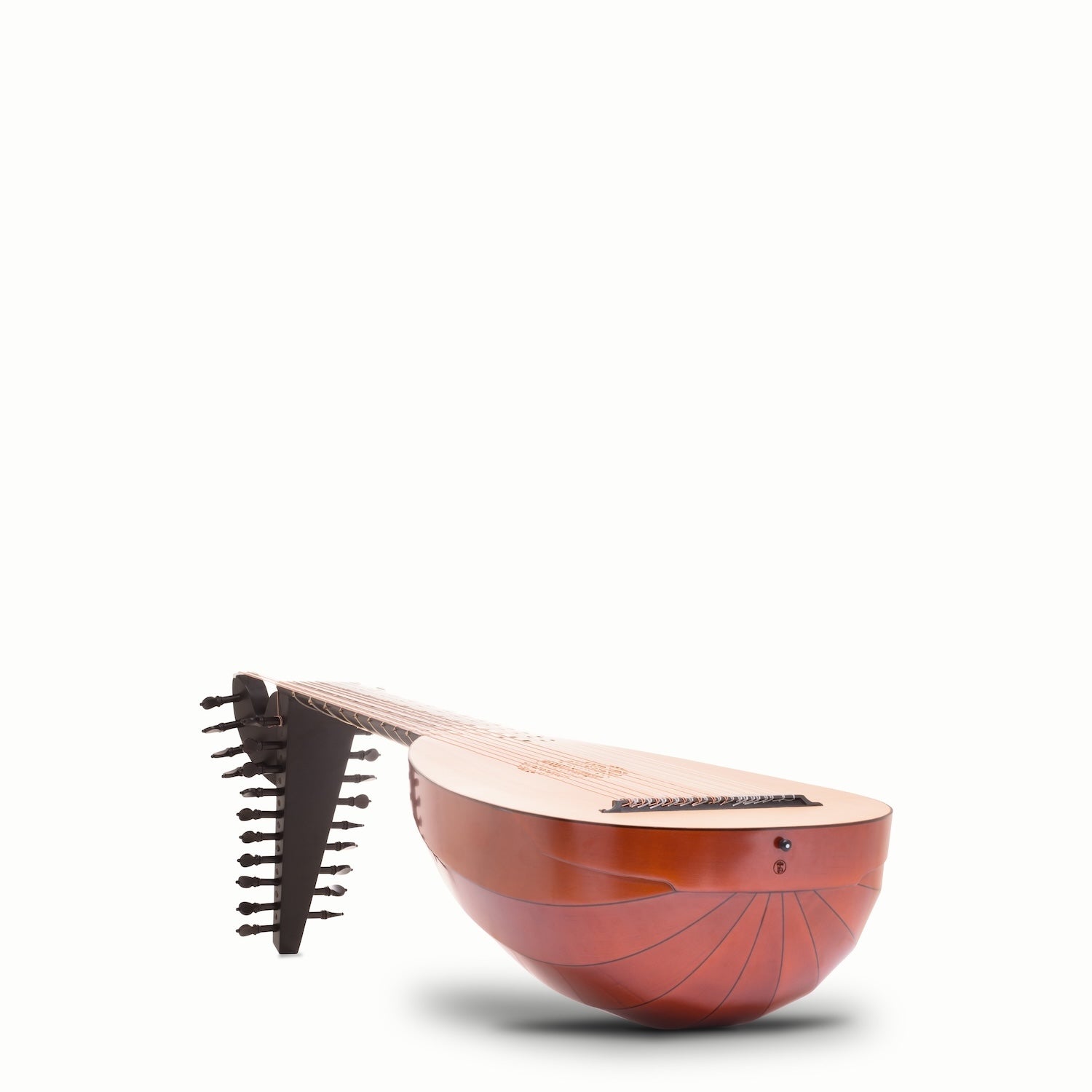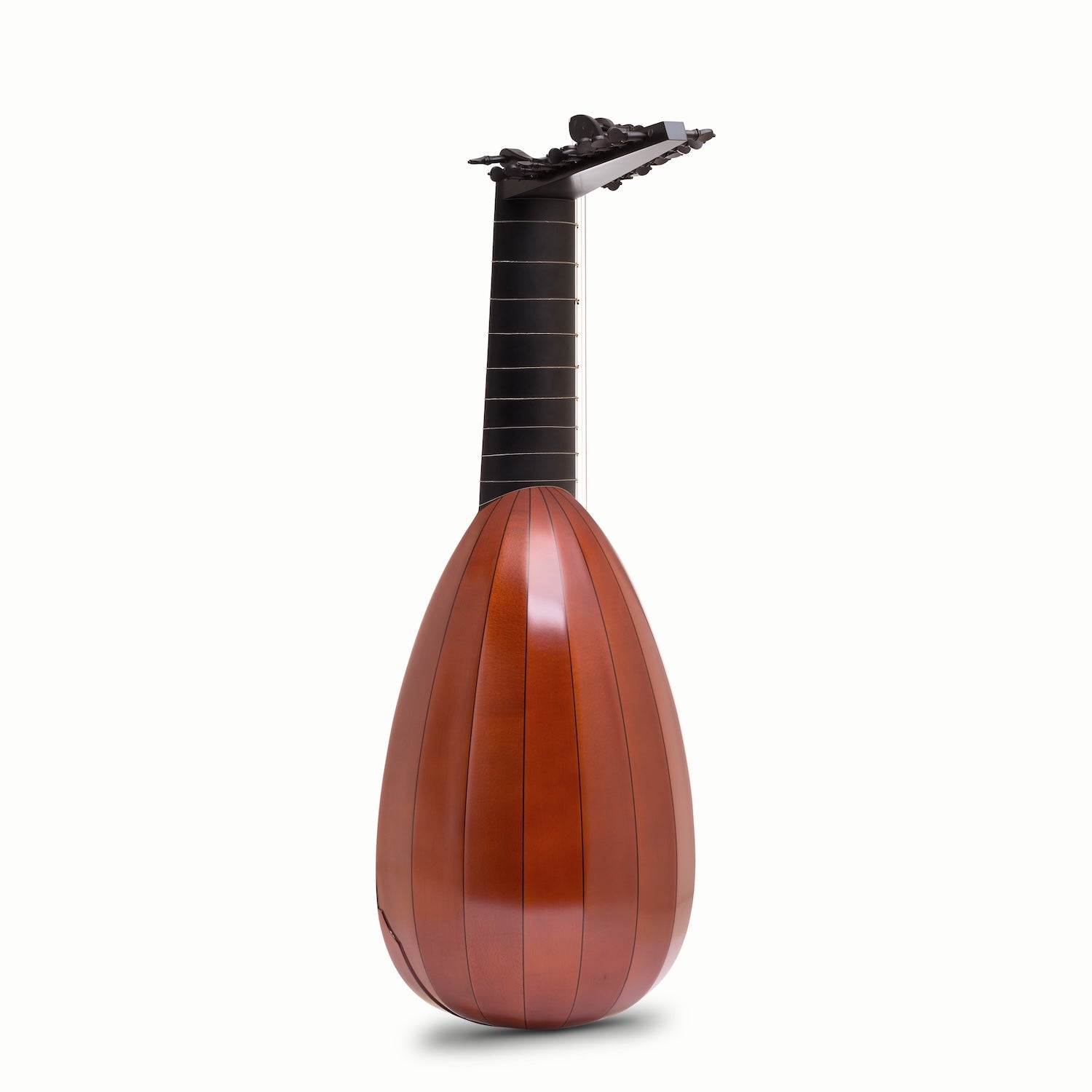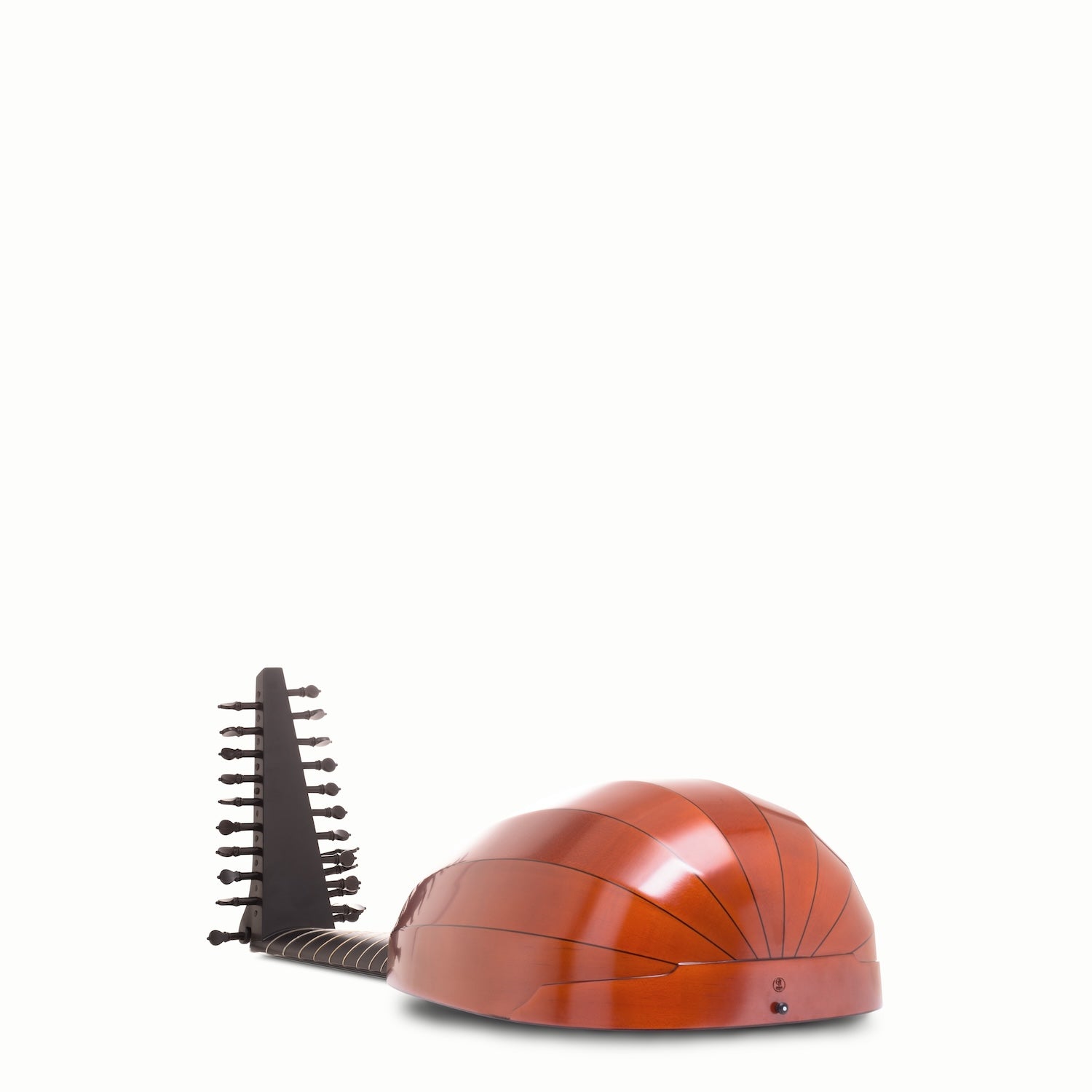Le Luth Doré
Baroque Lute 13c LLD® Baron
Baroque Lute 13c LLD® Baron
SKU:LLDI02-W
• Type: Baroque Lute
• Number of strings: 13 courses
• Tuning pitch: A 415 Hz
• Tuning: A/a, B/b, C/c, D/d, E/e, F/f, G/g, A/a, d/d, f/f, a/a, d, f
• Vibrating length: 690 mm
• Nut width: 75.5 mm
• Bridge width: 140 mm
• Ribs: 9
• Weight: 1150 g
No VAT applied (Article 293 B of the French Tax Code).
Couldn't load pickup availability
Share
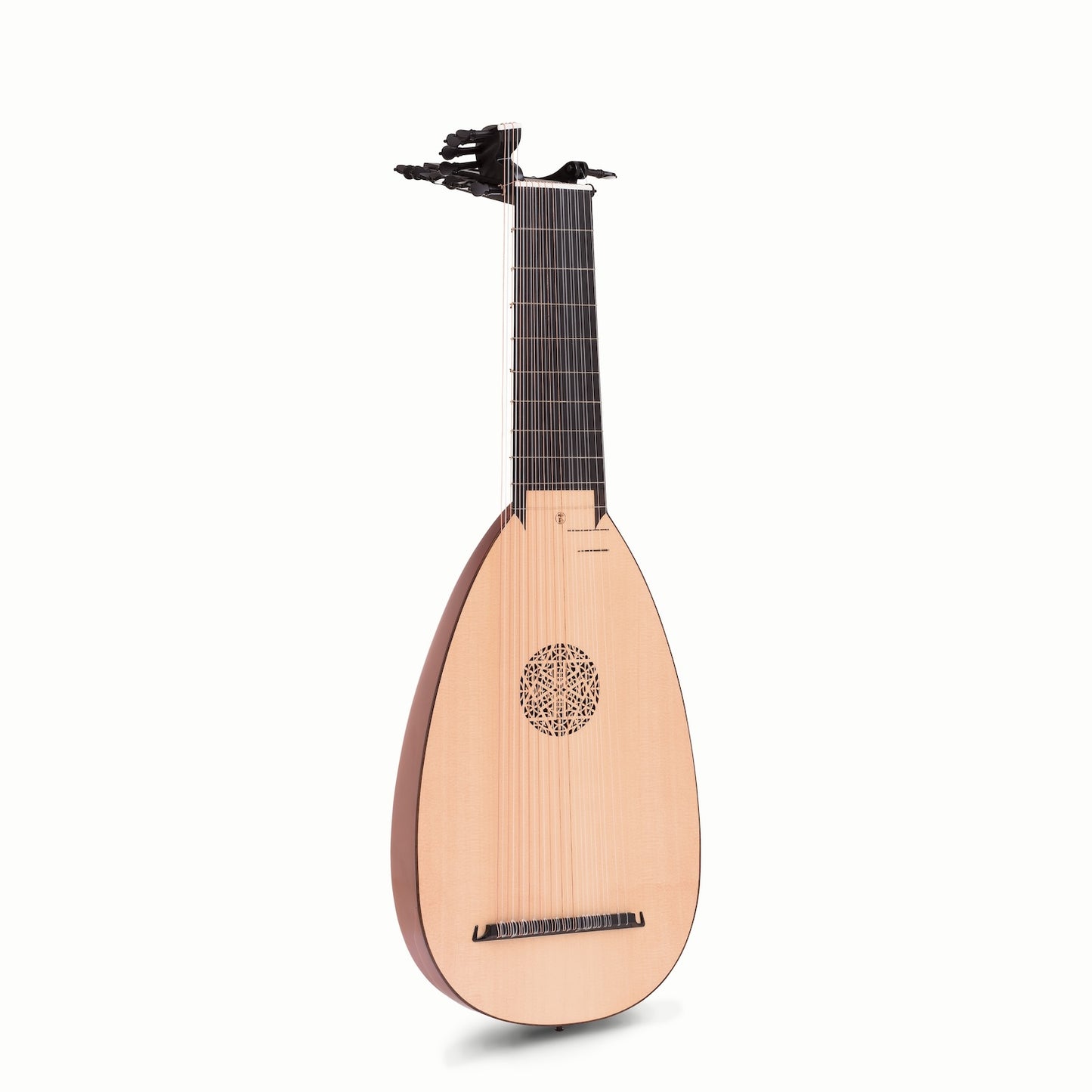

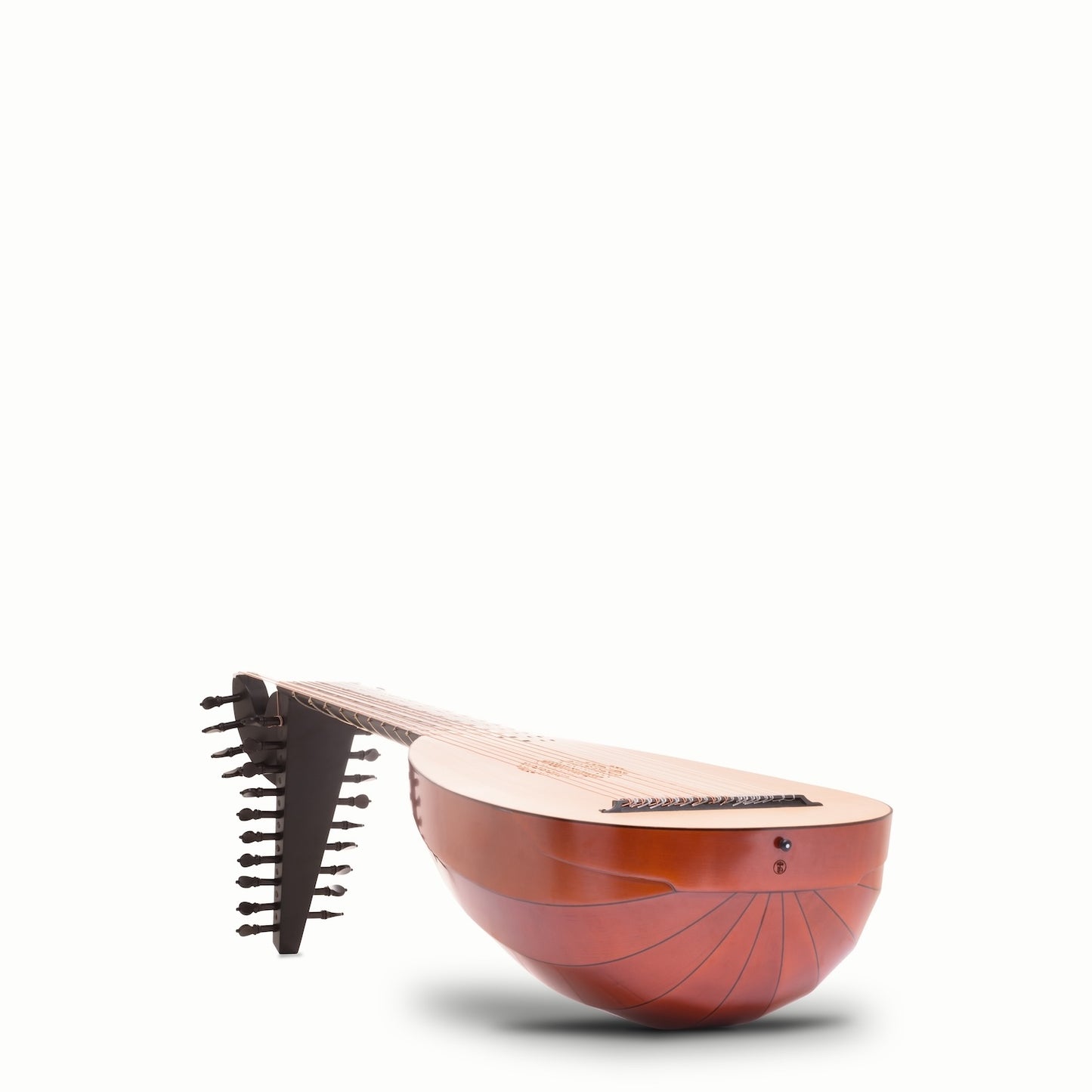
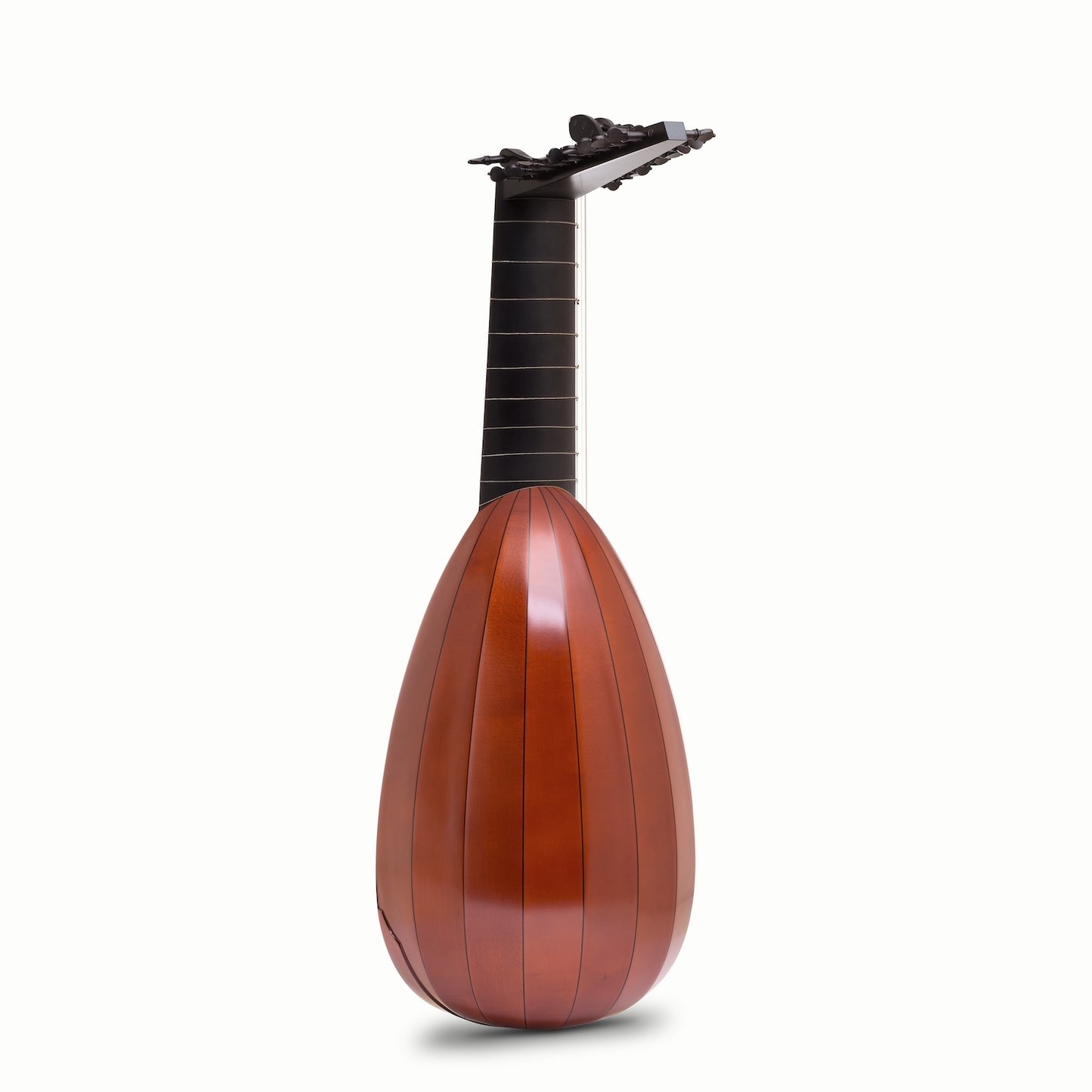
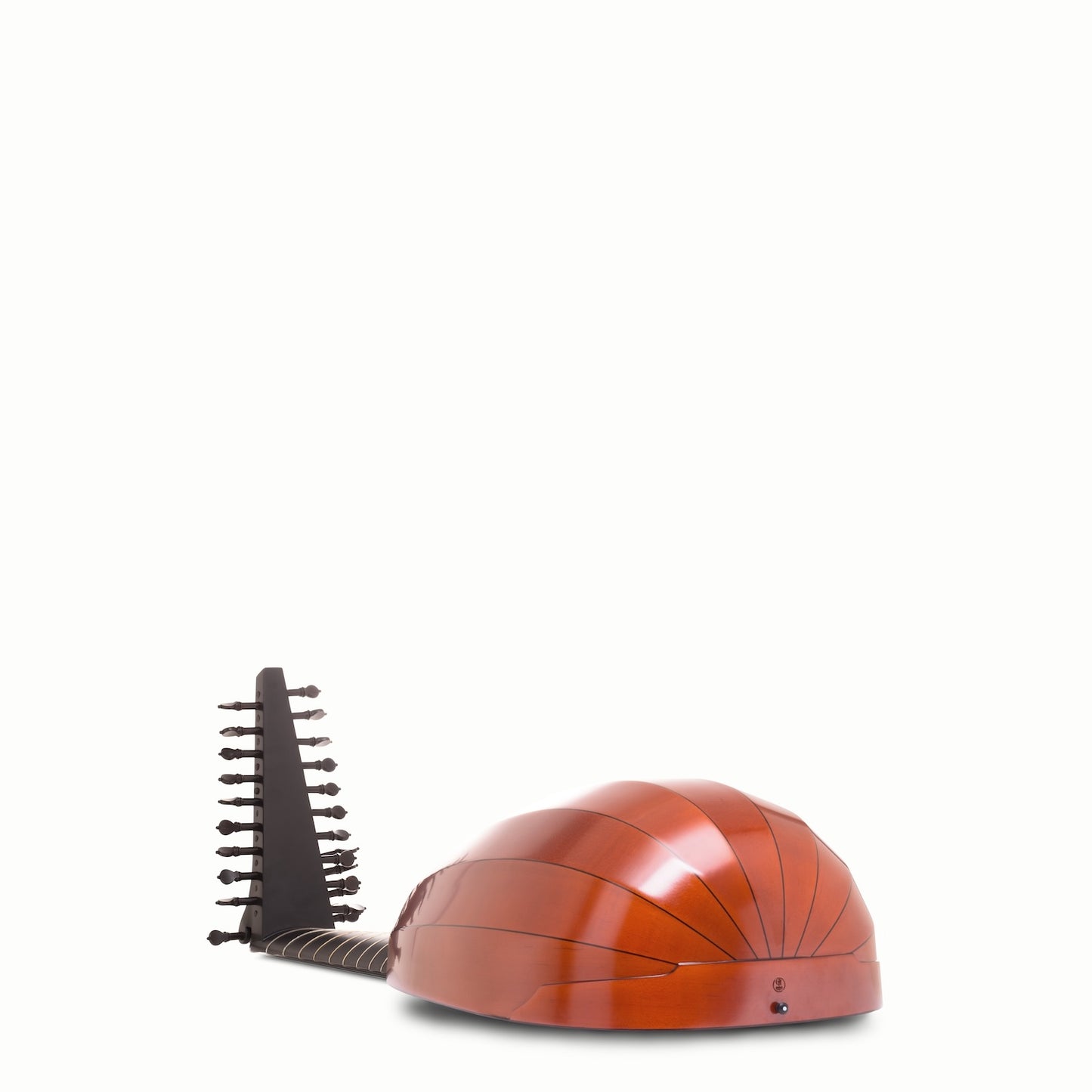
Détails du produit
Overview
Quality, Refinement, and Tradition
Le Luth Doré® lutes, early guitars, and mandolins are designed in Paris by experienced European luthiers and handcrafted according to the highest standards of lutherie.
Each LLD® instrument embodies over forty years of combined experience among master luthiers and draws on twenty years of musical expertise from internationally renowned lutenist Miguel Serdoura.
The sound, resonance, and beauty of our instruments directly depend on the quality of the woods used. That is why we carefully select each species, naturally aging them to ensure optimal acoustic performance and exceptional longevity.
Each LLD® lute, early guitar, or mandolin is a true work of art: born from a rigorous selection of noble materials, it comes to life under the passionate hands of our artisans until it reaches perfection.
Technical Details
- Solid B-grade spruce soundboard, offering good tonal balance with beautiful projection and stable response
- Solid maple back and sides, sanded and finished with a thin light red oil varnish
- Ebony purflings
- Maple neck, bridge, and pegbox, sanded and finished in black
- Ebony tuning pegs
- Ebony fingerboard and frets on the soundboard
- Slightly curved fingerboard (about 2 mm)
- Sheep gut fingerboard frets
- Natural cow bone nut
- Laser-carved rosette
- Aquila Nylgut® strings
- Includes LLD® FG-B hard case
- Includes two LLD® L1 case shoulder straps
Specifications
Wood Characteristics and Color
The soundbox of our LLD® Weiss 13-course Baroque lute is constructed from flamed maple. This wood is very dense and reflective, producing a strong, projecting, and sustained sound. Maple is renowned for its range of figured patterns, from curly or flame to birdseye or mottled, adding aesthetic beauty to an instrument.
The orange-golden hue of our thin oil varnish, finished matte and applied over the flamed maple, gives our LLD® lutes a tonal color very close to that of historical lute varnishes from the 16th, 17th, and 18th centuries.
Sound Characteristics
Maple’s greatest sonic quality is its linearity—it is a wood with a very transparent and predictable sound. It reflects exactly what the instrument’s design and the player’s style bring to it.
Flamed maple is highly appreciated for its sound transparency, faithfully reflecting the qualities of the soundboard without overly coloring them. The flamed maple used on our LLD® lutes delivers a strong, clean, and well-projected sound.
Flamed Maple or Figured Sapelli?
Figured sapelli is a harder wood than flamed maple. Both tend to be direct, bright, and warm, but figured sapelli exhibits more prominent highs and deeper lows than flamed maple—this is the main sonic difference between the two woods.
Flamed maple has a very direct but warm sound and offers fewer harmonics or complexity than figured sapelli. What is initially heard with flamed maple is what remains—the sound projected by the lute at attack remains throughout the note’s decay. Flamed maple should be chosen based on its age to be fully appreciated.
Figured sapelli provides a slightly less direct sound than maple, with stronger harmonics and generally adds more complexity to the lute’s tone.
The Soundboard
Spruce is the most commonly used wood for the soundboard of European lute family instruments. LLD® uses only premium-grade solid spruce soundboards of excellent quality for its lutes.
The soundboard greatly influences the lute’s tone, though the soundbox also plays a key role. It affects the instrument’s responsiveness, sustain, and part of its harmonic color and fundamental tonal quality of each note.
Considering the differences between flamed maple (which emphasizes fundamental tones) and figured sapelli (which emphasizes harmonics), we have selected two different spruces to find the right balance.
The fine-grained spruce used by LLD® with flamed maple lutes is a high-quality lutherie wood, very rigid and relatively light. It produces wide dynamics and a strong fundamental sound.
The more open-grained spruce used by LLD® with figured sapelli lutes is also a high-quality lutherie wood but with slightly less rigidity and lighter weight. It yields stronger harmonics and somewhat muffled fundamentals.
Instrument Setup
Before shipment, each LLD® lute is carefully inspected in Paris by a professional luthier trained at the conservatory and, if necessary, adjusted by a Parisian luthier specializing in the construction, restoration, and repair of quality professional historic and modern lutes.
Our instruments are precisely crafted; they are then fine-tuned to ensure the correct table scooping as well as the proper nut and bridge height to optimize string action.
History
History of the Lute
The lute is probably the most widespread type of string instrument in the world. In Europe, it enjoyed great popularity from the 15th to the 18th century, playing a key role both in court music and popular music. It is frequently depicted in artworks from the Middle Ages, as well as the Renaissance and Baroque periods. It was the quintessential plucked string instrument of these eras.
Originating in the Middle East under the Arabic name ʿūd, it was introduced to Europe in the 13th century. The European lute is distinguished by its rounded pear-shaped body, a neck with a pegbox angled backward, and strings attached to a glued bridge on the soundboard. It features a circular sound hole adorned with a finely carved wooden rosette.
The earliest European lutes followed the model of Arabic instruments, with four strings played using a plectrum cut from a feather shaft. Around the mid-14th century, the strings were grouped in pairs called courses, tuned in unison or, for the basses, in octaves. By the late 15th century, the plectrum was abandoned in favor of finger plucking, and movable gut frets were added to the fingerboard. The instrument then adopted a fifth course. The introduction of frets was a decisive advance, enabling more precise polyphonic playing and better intonation.
The Renaissance Lute
In the 16th century, the classic form of the Renaissance lute emerged, with six courses (the highest course consisting of a single string) tuned to G–C–F–A–D–G, covering a range from G² to C⁴. Subsequently, additional courses were added, increasing the total beyond six.
Among the most renowned luthiers of this era were Laux Maler, Hans Frei, Vendelio Venere, Moeses, and Magno Tieffenbrucker.
As the instrument evolved, a more codified playing technique appeared alongside a specific notation system: tablature. This system represented the courses as horizontal lines and notes by letters or numbers indicating which fret to press and which string to pluck, integrating rhythmic information.
The Archlute, Chitarrone, and Theorbo
At the start of the 17th century, the seven-course lute was modified by adding extra bass strings, giving rise to instruments with eight, nine, or ten courses. This extension required a longer neck and an additional pegbox to accommodate the new strings, called diapasons. These advanced instruments became known as archlute, chitarrone, and theorbo.
The Baroque Lute
Shortly after 1600, French lutenists introduced changes to the instrument’s tuning, leading to decades of experimentation. Around 1650, a new tuning known today as the D minor tuning became standard. The number of courses increased further in the 18th century, reaching up to thirteen.
The first six courses formed a D minor triad (A²–D³–F³–A³–D⁴–A⁴), followed by five to seven additional courses extending down to low A. These D minor lutes, now called Baroque lutes, exist in versions with eleven, twelve, or thirteen courses, depending on the repertoire.
Modern lutenists tune their lutes, vihuelas, archlutes, and theorbos at various reference pitches, generally between 392 Hz and 470 Hz, depending on the instrument type, repertoire, and ensemble practices. Historically, no standard pitch was fixed.
Today, the usual tunings are:
– Renaissance lute at 440 Hz
– Baroque lute at 415 Hz
Press Reviews
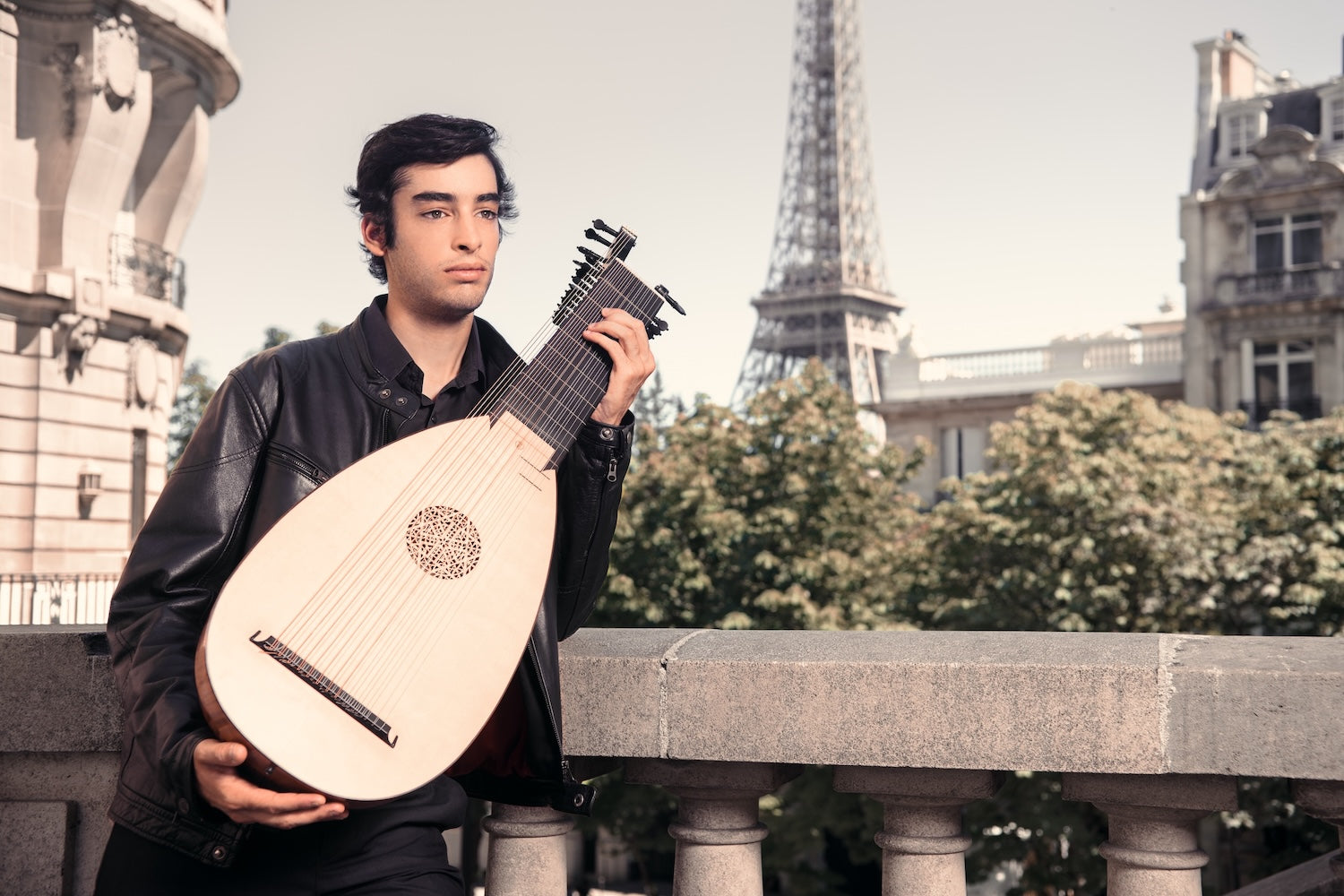
13c Baroque Lutes LLD®
Three high-end models for the most discerning lutenists:
• Hagen, with a warm and deep tone (veined sapele bowl)
• Weiss, offering a clear and powerful sound (flamed maple bowl)
• Baron, with a soft and balanced tone (maple bowl)
All come with a LLD® FG-B hard case for optimal protection.



